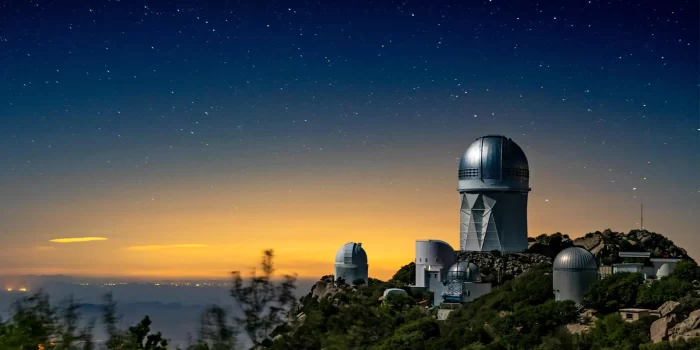Astronomers have accomplished another new landmark in the efforts to understand our cosmos by revealing the biggest 3D map. This innovative accomplishment allows us to peer back into the infancy of our cosmos and also suggests the hope of discovering new physics.
The effort of creating the Dark Energy Spectroscopic Instrument (DESI) began in 2021 and involved international scientists. Currently, the map contains 5.7 million galaxies and quasars; however, this is only 15% of their final number that DESI will collect during its lifetime—40 million. The researchers are able to see back 11 billion light-years into history with less than a percent error, so this data serves as a direct window into the universe’s past.

On the DESI picture of the sky, we can see that the universe looks like a big, complex spiderweb made of galaxies joined by empty spaces. Every faint point on this map indicates one complete galaxy with millions of stars and billions of planets inside it. Still, DESI’s task is much more profound than dazzling graphics. The aim is to decipher the secrets of dark energy as it is thought to be an enigmatic driving force that makes the universe speed up its expansion over time. This suggests that dark energy dominates over 68% of the universe based on contemporary cosmological models, like the Lambda cold dark matter (LCDM) model. But still, we don’t know much about this force. Yet DESI wants to do the opposite by meticulously documenting galaxies and quasars to find out their distance and speed in order to investigate how dark energy behaves during different epochs in the history of the cosmos.
Even though the first data were consistent with the LCDM model, merging the results of DESI with other research has shown some interesting variances. Nearer galaxies appear to travel at velocities that are inconsistent with a steady dark energy, indicating that its power may fluctuate over time. This discovery challenges the idea of a cold, black “heat death,” and could have significant ramifications for the ultimate fate of the universe.
Although these results are intriguing, the researchers warn that more data analysis is required to validate these anomalies. It is anticipated that DESI will keep gathering data until 2026, providing scientists with the chance to explore the mysteries of the cosmos in more detail and maybe transform our knowledge of the universe.


